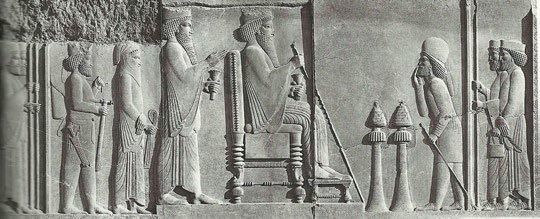Tafelkleedje?
Veel mensen leggen een kleedje op hun tafel. Een tafelkleed is een geweldige manier om de look van een tafel te veranderen, of om het te beschermen voor vlekken of schade. Niet iedereen’s tafelkleed heeft echter een dieper, interessanter verhaal er achter.
Grappig genoeg realiseerde de eigenaar van dit object niet eens dat dit kleedje een interessant verhaal heeft. Toen we vroegen over wat voor objecten ze met zich mee had genomen zei ze aanvankelijk dat ze niks speciaals had. Eerst kwam ze met een pandaknuffel en een flesje, maar onze ogen vielen direct op dit kleedje. Waar had ze het vandaan, en waarom heeft ze zo’n Perzisch kleedje in haar huis?
“Een vriendin die in Iran studeerde nodigde me uit om langs te komen, en ik heb haar toen twee weken lang bezocht. Toen ik daar was heb ik dit kleedje gekocht, ik bracht het mee terug naar China. Ik besloot om het met me mee naar Nederland te nemen toen ik hierheen verhuisde om een PhD te doen.”
Perzisch textiel is erg populair over de hele wereld, met name tapijten. Perzische tapijten worden al tijden geliefd, zowel binnen als buiten de grens.
Hoewel dit kleine kleedje niet hetzelfde is, heeft het ook een Perzisch design, gedecoreerd met het design van de Farahavar, een bekend symbool van het Zoroastrisme..
Dit kleedje vertelt niet alleen het verhaal wat er op afgebeeld is, maar ook de verhalen over zijn achtergrond en het fabricage process. Daarbij heeft het sinds de dag dat het is verkocht de eigenaar vergezeld naar verschillende plekken en verzamelt het nog meer verhalen. Op deze manier kan dit object verschillende verhalen vertellen over zijn productie, cultureel belang, eigenaar, en reis over de wereld.
Wellicht heb je niet door wat objecten op je tafel vertellen over de wereld waarin we leven. Soms vertellen de objecten die nu om je heen zijn een interessant verhaal. Ze staan misschien niet in een museum, maar objecten die we elke dag gebruiken vertellen veel over de menselijke interactie die we met ze hebben, zoals uitgelegd door Fresco Sam-Sin:
"Dingen - de objecten, tools, en artefacten van het dagelijks leven - zijn de materiële uitdrukking van menselijke ervaring. Zonder zouden we kwijt raken wat ons maakt wie we zijn."
Kijk eens om je heen, en misschien voel je je meer verbonden met de objecten in je kamer dan ooit.
